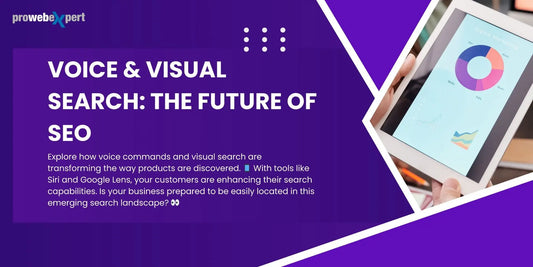
What is Micro-Branding- And Why It’s the Future of Online Business
Share
In the realm of e-commerce and digital marketing, branding has consistently been a fundamental element of success. However, contemporary consumers seek more than just recognisable logos or extravagant advertisements; they desire genuine connections, authenticity, and value. This is where micro-branding comes into play — an emerging trend that is transforming the operational and growth strategies of businesses in the online space.
What Is Micro-Branding?
Micro-branding refers to the approach of developing small, highly specialized brands or sub-brands that target a specific audience, niche, or objective. In contrast to conventional branding, which seeks to attract a broad market, micro-brands communicate directly with a more narrowly defined demographic.
It’s about:
-
Personalization
-
Niche targeting
-
Storytelling
-
Community building
Instead of creating a single overarching brand, businesses are increasingly developing multiple micro-brands, each possessing its distinct identity, tone, and values, specifically designed to cater to various customer segments.
Why Is Micro-Branding Gaining Popularity?
-
Customers Want to Feel Seen and Understood
In a marketplace filled with countless choices, consumers prefer to engage with brands that resonate with their values. Micro-brands are tailored to meet the needs of particular lifestyles, beliefs, or interests, fostering a feeling of community.
A skincare company may introduce a micro-brand dedicated exclusively to vegan and cruelty-free products designed for sensitive skin. Consumers who share these principles are more inclined to develop a profound emotional bond.
-
Low-Cost Tools Make It Easy to Launch
Utilizing platforms such as Shopify, Canva, Instagram, and TikTok has simplified the process of establishing a new brand or sub-brand within a matter of weeks. A substantial budget or a large marketing team is not a prerequisite for achieving significant results.
-
Influencer Marketing and UGC Support Niche Branding
Micro-brands flourish through collaborations with influencers and content created by users. By focusing on specific niche markets, they are able to partner with micro-influencers who possess established credibility in those areas.
-
Faster Testing and Scaling
Are you considering assessing a novel idea or product? Micro-branding enables you to do so swiftly while preserving the core identity of your primary brand. If the micro-brand works, you can grow it. Conversely, if it does not perform well, it is simpler to adjust your strategy or discontinue it.
Benefits of Micro-Branding for Online Businesses
1. Higher Customer Loyalty
Consumers tend to favor brands that resonate with their personal identity. When your micro-brand caters to a particular niche, it creates a sense of belonging for customers, making them feel as though the brand was specifically designed for them.
2. Improved Conversion Rates
A focused strategy enhances messaging, visuals, and offers, which can greatly improve your website's conversion rate in comparison to generalised marketing.
3. Reduced Marketing Waste
Rather than allocating substantial funds to reach a broad audience, micro-brands concentrate their efforts on targeted channels, hashtags, influencers, and communities, resulting in improved return on investment.
4. Increased Agility
Smaller brands are more agile, allowing for the testing of various styles, tones, packaging, and campaigns without the need for corporate-level approvals.
Examples of Successful Micro-Brands
-
Glossier’s Balm Dotcom: Despite being a prominent brand, Glossier ensures that each product line possesses a distinct identity, with Balm Dotcom particularly appealing to enthusiasts of minimalist beauty.
-
Nike’s Jordan Brand: A subsidiary brand aimed at basketball culture enthusiasts and sneaker aficionados.
-
Many DTC brands on TikTok: Small enterprises that concentrate on a specific product, such as hair oil, candles, or eco-friendly bags, and cultivate a dedicated customer base around it.
How to Start Your Own Micro-Brand
-
Choose a Clear Niche: Begin by pinpointing a demographic that is either underserved or in search of particular offerings. This may be categorized by lifestyle (such as environmentally conscious mothers), occupation (like freelance designers), or principles (for instance, vegan athletes).
-
Build a Unique Identity: Develop a name, logo, tone, and message that effectively communicates with that specific audience. Don't try to please everyone; what makes you unique is what makes you most valuable.
-
Use the Right Platforms: For a Gen Z audience, utilize platforms such as TikTok and Instagram. Conversely, if your target demographic consists of professionals, it would be prudent to explore LinkedIn or specialized communities like Reddit forums.
-
Collaborate with Micro-Influencers: Identify influencers who possess a modest yet highly engaged following within your specific niche. Their endorsements frequently result in superior engagement compared to campaigns featuring celebrities.
-
Keep It Simple: Avoid complicating your micro-brand. Concentrate on addressing a particular issue and provide a superior solution compared to others.
The Future of Online Business is Micro, Not Massive
In a saturated digital landscape where attention spans are limited, companies that attempt to cater to all audiences frequently find themselves appealing to none.
Micro-branding enables companies to delve deeply into niche markets, fostering dedicated communities rather than merely attracting broad audiences, and prioritizing meaningful impact over sheer reach.
Regardless of whether you are an individual entrepreneur, a startup, or an expanding eCommerce business, micro-branding provides the adaptability and genuineness that contemporary consumers seek.
Conclusion
Micro-branding represents more than a mere marketing trend; it signifies a fundamental change in perspective. It emphasizes the importance of understanding authentic individuals, their true needs, and delivering real value to them.
As competition intensifies and personalization becomes standard, the prominence of micro-branding is set to increase. It is essential to adopt a small-scale approach, as significant opportunities are now found in this realm.




